It’s been a great year for us, full of fun and learning. In this last post of 2011 I’ll review the year’s most interesting posts. Early next week, I’ll add a few more thoughts about 2011 and preview our plans for 2012.
But first let me give a shout out to Stabby Raccoon’s “Guide to Binge Drinking,” at the new group blog “Highbrow Paleo.” If you plan to drink alcohol on New Year’s Eve, either for pleasure or to raise your HDL, you might want to look up Stabby’s advice.
The Puzzle of High LDL on Paleo
One of the more interesting puzzles we delved into this year was the problem of high LDL on Paleo.
Reader Larry Eshelman had this problem, and gathered a large number of examples of low-carb Paleo dieters with high LDL: Low Carb Paleo, and LDL is Soaring – Help!, Mar 2, 2011. We suggested a possible remedy – repairing deficiencies in micronutrients known to be crucial to vascular function – in Answer Day: What Causes High LDL on Low-Carb Paleo?, Mar 3, 2011.
That remedy worked for Larry, and we’ll do an update on his case soon. But it wasn’t the whole story, and later in the year we looked at another cause of high LDL on Paleo – low thyroid hormone levels – in High LDL on Paleo Revisited: Low Carb & the Thyroid, Sep 1, 2011. Going too low-carb causes a reduction in T3 thyroid hormone levels, which leads to inactivation of LDL receptors and potentially large increases in LDL levels. Gregory Barton shared his case history.
Blood Lipids as Diagnostic Tools
We were also led to think about blood lipids because lipoproteins are immune molecules of considerable importance in fighting infectious diseases. We talked about the immune functions of HDL in HDL and Immunity, Apr 12, 2011, and HDL: Higher is Good, But is Highest Best?, Apr 14, 2011. We talked about the immune functions of LDL, VLDL, and Lp(a) in Blood Lipids and Infectious Disease, Part II, Jul 12, 2011.
With help from blogger O Primitivo, we looked at what serum lipid levels optimize health in Blood Lipids and Infectious Disease, Part I, Jun 21, 2011. It’s higher than most think: TC between about 200 and 240 mg/dl is optimal.
We discussed ways to improve immune function by raising HDL in How to Raise HDL, Apr 20, 2011.
Don Matesz objected that newborns have very low serum cholesterol, so we looked at Low Serum Cholesterol in Newborn Babies, Jul 14, 2011. Breast-fed babies achieve normal serum cholesterol of about 200 mg/dl at age six months, which is also when their immune function normalizes.
Another objection was based on the claim by Paleo pioneers Boyd Eaton and Loren Cordain that hunter-gatherers had low serum cholesterol. That led us to a number of posts: Did Hunter-Gatherers Have Low Serum Cholesterol?, Jun 28, 2011; Serum Cholesterol Among the Eskimos and Inuit, Jul 1, 2011; Serum Cholesterol Among African Hunter-Gatherers, Jul 5, 2011; Serum Cholesterol Among Hunter-Gatherers: Conclusion, Jul 7, 2011. The upshot: healthy hunter-gatherers had normal serum cholesterol, with TC usually over 200 mg/dl. The cases of low serum cholesterol were either in stale samples collected from remote sites in the 1930s to 1950s without use of refrigeration and delays of weeks to months in measurement, or from hunter-gatherers with high rates of infectious disease from parasitic protozoa or worms.
This literature survey led us to the belief that there are really only two common causes for low total serum cholesterol (not counting statin consumption): eating a lipid deficient diet, such as a macrobiotic diet; or having an infection with a eukaryotic pathogen.
This means that anyone eating a high-fat diet who has low serum cholesterol should get checked out for eukaryotic infections, probably protozoa or worms. We’ve encouraged half a dozen people or so to do this.
Brendan is a great example. He first left a comment in May asking for advice:
I have rosacea, puffiness in my cheeks, post-nasal drip, frequent headaches, severe constipation (IBS), hypothyroidism, extremely low cholesterol, and a variety of neuropsychiatric symptoms (depression, anxiety, insomnia, and cognitive and motor problems).
“Extremely low cholesterol” is the tell-tale clue. He reported back in December: he did indeed have whipworm and entamoeba infections, and is now seeking treatment.
I like this story because it is a great example of what we’re trying to achieve on this blog. Diet, nutrition, and infections interact to product one’s health; we want to understand how to troubleshoot any problems. I’m excited that blood lipids are turning out to be good diagnostic markers for certain types of infection that are often overlooked.
The Challenge of Obesity
Our diet was designed to help people become healthy; it was not designed as a weight loss diet. Nevertheless, Shou-Ching and I were well aware of the failure of most weight loss diets to cure obesity – rather they tend to produce temporary weight loss followed by yo-yo weight regain – and we strongly suspected that a diet designed for general health might be the best strategy for long-term weight loss. So entering 2011, we were very curious how our diet would work for people trying to lose weight.
From Atkins to the Dukan Diet, recently embraced by Kate Middleton, popular diet books generally recommend high protein consumption, which seems to be very effective at promoting short-term weight loss. A few posts explored the place of protein in a weight loss diet, and whether there are alternatives to high protein: Protein, Satiety, and Body Composition, Jan 25, 2011; Low-Protein Leanness, Melanesians, and Hara Hachi Bu, Jan 27, 2011.
A few people who transitioned to our diet from very low-carb diets noticed an immediate gain of 3 to 5 pounds. This caused us to look into the issue of water weight: Water Weight: Does It Change When Changing Diets? Does It Matter?, Jan 14, 2011.
We also did a bit to link obesity to our favorite causes of disease – malnutrition, toxins, and infections – in Why We Get Fat: Food Toxins, Jan 20, 2011. Another post along this line was Obesity: Often An Infectious Disease, Sep 20, 2010.
Losing weight is especially hard for post-menopausal women, especially if they can’t exercise. Calorie needs may be as low as 1500 calories per day, making it hard to be well nourished on a calorie-restricted diet. The case of erp, a 76-year-old women with bad knees who needed to lose weight for knee replacement surgery, led us to clarify where the calories should come from when few can be eaten: Perfect Health Diet: Weight Loss Version, Feb 1, 2011.
We were happy that erp did indeed lose weight, dropping from size 16 to size 6. Another impressive case of weight loss was recorded by Jay Wright, who started our diet in March at 250 pounds and reached his goal weight of 170 pounds in October. Jay generously shared his story: Jay Wright’s Weight Loss Journey, Dec 1, 2011.
Stephan Guyenet, one of the finest diet and nutrition bloggers, introduced us to “food reward” and to the role in obesity of the brain modules that manage appetite and energy homeostasis. He had a back-and-forth with Gary Taubes over their differing views. I chimed in on a few occasions, notably in Gary Taubes and Stephan Guyenet: Three Views on Obesity, Aug 11, 2011, and Thoughts on Obesity Inspired by Stephan, Jun 2, 2011.
The Guyenet-Taubes debate gave me an opportunity to present a figure from a classic study by Maria Rupnick and colleagues. Giving or withholding an angiogenesis inhibitor causes ob/ob (obesity prone) mice to cycle between obese and normal weight:
It is hard to see how either a brain-centric view or a carb-and-insulin-centric view can account for this. I see this data as testimony to the complexity of biology.
I’m going to be developing my own theory of obesity in 2012; I previewed this theory in my talk at CrossFit NYC on November 19. One element was the subject of a 2011 post: How Does a Cell Avoid Obesity?, Jan 18, 2011. Leptin resistance and insulin resistance – two of the hallmarks of obesity – are symptoms of the disease of obesity, not its cause.
Therapeutic Ketogenic Diets
Ketogenic diets are potentially highly beneficial to neurological function, and are an under-utilized therapy for neurological conditions.
One reason they’re under-utilized is that clinical ketogenic diets have been poorly designed and malnourishing. We discussed how to make a diet ketogenic while minimizing health risks in Ketogenic Diets, I: Ways to Make a Diet Ketogenic, Feb 24, 2011, and Ketogenic Diets 2: Preventing Muscle and Bone Loss on Ketogenic Diets, Mar 10, 2011.
But the goal is to demonstrate that ketogenic diets can be therapeutic for various conditions. We had several great stories from people trying our version of the ketogenic diet.
Kate was able to relieve migraines and anxiety: A Cure for Migraines?:, Mar 29, 2011.
In a poignant story, we learned about a genetic disorder called NBIA (Neurodegeneration with Brain Iron Accumulation). Children with this disorder develop extremely painful muscle spasms and are usually in agony from around age 6, before dying in their teens. It turns out that a ketogenic diet effectively prevents the spasms and pain. Two parents of NBIA children shared photos of their kids in Ketogenic Diet for NBIA (Neurodegeneration with Brain Iron Accumulation), Feb 22, 2011. From being in constant pain, the boys had gone to “smiling and laughing all the time”:
Hypothyroidism
Thanks to our resident expert on hypothyroidism, Mario Renato Iwakura, we had a number of excellent discussions of how to optimize diet and nutrition for hypothyroidism.
First, Mario defended our support of selenium and iodine supplementation in cases of hypothyroidism, including Hashimoto’s autoimmune hypothyroidism, with a thorough review of the literature: see Iodine and Hashimoto’s Thyroiditis, Part I, May 24, 2011, and Iodine and Hashimoto’s Thyroiditis, Part 2, May 26, 2011. It is crucial to get selenium in the range 200 to 400 mcg per day, and to avoid an iodine deficiency. With optimal selenium, a wide range of iodine intakes are healthy, including quite high iodine intakes.
Later in the year, readers asked us to address claims by Anthony Colpo that low-carb diets would lead to “euthyroid sick syndrome,” a condition of low T3 thyroid hormone. We found support for that idea, but only for “very low-carb” diets, ie those with carbs below 200 calories per day (more in athletes or those with inadequate protein intake). Thyroid problems were also exacerbated when omega-6 fat intake was high. A literature search was unable to find instances of thyroid problems on low omega-6 and adequate carb diets. The main posts: Low Carb High Fat Diets and the Thyroid, Aug 18, 2011; Carbohydrates and the Thyroid, Aug 24, 2011; Mario Replies: Low Carb Diets and the Thyroid, II, Aug 30, 2011.
This was a useful discussion, as it led us back to the problem of high LDL on Paleo due to low T3 thyroid hormone levels caused by very low carb consumption.
The Place of Starches in a Paleo Diet
Given that some carbs should be eaten, what form should they take? There are two main food types of carbohydrate, sugars and starches.
I was surprised by the vehement opposition to starch consumption displayed by many low-carb advocates polled by Jimmy Moore in October. Most low-carb diets support the eating of sugary fruits and vegetables, and I would have thought that opposition to starches would be no greater than opposition to sugars. How wrong I was!
My original reply to the many low-carb gurus polled by Jimmy can be found here: Jimmy Moore’s seminar on “safe starches”: My reply, Oct 12, 2011. A week later I added a discussion of why the glycemic index or starches doesn’t matter when they are eaten the way we advise eating them: How to Minimize Hyperglycemic Toxicity, Oct 20, 2011. Dr Ron Rosedale enthusiastically continued the conversation, and I replied to Ron: Safe Starches Symposium: Dr Ron Rosedale, Nov 1, 2011.
Shortly afterward I spoke at the Wise Traditions conference of the Weston A Price Foundation – a great meeting! – and was asked about the GAPS diet of Dr. Natasha Campbell-McBride. It is an excellent diet which embodies a lot of clinical lore about how to heal gut dysbiosis, but its recommendation to avoid starches, while usually helpful, is not always the best course. There are pathogens capable of exploiting every human ecological niche and diet, including very low-carb or fructose-containing diets, and so there is no one diet that is perfect for every patient. Some cases of gut dysbiosis actually benefit from added starch. There seemed to be a bit of controversy about what I said, and I clarified my off-the-cuff comments here: Around the Web; Revisiting Green Meadows Farm, Dec 3, 2011.
Infectious Diseases
I thought I was going to blog a lot more about infectious diseases in 2011, but didn’t get around to it. Still, I got started in February with a few posts: They’ve Got Us Surrounded, Feb 8, 2011; Jaminet’s Corollary to the Ewald Hypothesis, Feb 11, 2011; and Evidence for Jaminet’s Corollary, Feb 15, 2011.
Circadian Rhythm Therapies
I’ve known for a long time that circadian rhythms were important for health. Disruption of circadian rhythms, for instance, by night shift work, is associated with higher rates of disease.
What I didn’t know, until I began to read Seth Roberts, is that simple dietary and lifestyle tactics can have a big impact on circadian rhythms. Seth Roberts and Circadian Therapy, Mar 22, 2011, looks at Seth’s work; “Intermittent Fasting as a Therapy for Hypothyroidism,” Dec 1, 2010, applies circadian rhythm therapies to hypothyroidism.
Cancer
We made a start toward discussing how to eat if you have cancer in two posts: Toward an Anti-Cancer Diet, Sep 15, 2011, and An Anti-Cancer Diet, Sep 28, 2011. Cancer is another disease in which circadian rhythm therapies seem to be important.
However, there’s much more to be said about cancer. We’ll probably discuss HDAC inhibition and anti-viral dieting in 2012.
Miscellaneous Disorders
Check out the “Diseases” categories in our Categories list for other disorders we’ve blogged about. A few items from 2011: Causes and Cures for Constipation, Apr 4, 2011; An Osteoarthritis Recovery Story, May 17, 2011; Around the Web; and Menstrual Cramp Remedy, Mar 5, 2011.
A Year of Food
In 2011, we decided to write a cookbook, and made an earnest start by posting a recipe once a week. Some of our favorite food posts:
Ox Feet Broth, Miso Soup, and Other Soups, Jan 2, 2011
Homemade Seasoned Seaweed, Jan 9, 2011
About Green Tea, Jan 30, 2011
Dong Po’s Pork, Feb 13, 2011
Pho (Vietnamese Noodle Soup), Feb 27, 2011
Pacific Sweet and Sour Salmon, Apr 10, 2011
Crème Brûlée, May 29, 2011
French Fried Potatoes and Sweet Potatoes, Jul 17, 2011
Chicken Wings, Sep 19, 2011
Sarah Atshan’s Lovely Food, Sep 11, 2011
Bi Bim Bap, Oct 16, 2011
Fermented Mixed Vegetables, Nov 27, 2011
Bengali Fish Curry (Machher Jhal), 2: The Recipe, Dec 27, 2011
Art
Shou-Ching wanted to be an artist but settled for being a scientist. This year she began to share some of her art work. We showed some of her paintings in Thank You From Shou-Ching, April 24, 2011, and her Photo Art appears weekly in our Around the Web posts. A complete compilation can be found on the Photo Art page.
Cute Animals
There were too many cute animals in the Around the Web posts to pick a favorite; but here’s one of my favorite places – Logan Pass, Glacier National Park, Montana:
Conclusion
It was a delightful year for us. We made a lot of new friends. Best of all, our diet seems to have improved the health of hundreds, maybe thousands, of people – often dramatically.
We wish all of our readers a very happy New Year! May all of us enjoy improved health in the year to come.







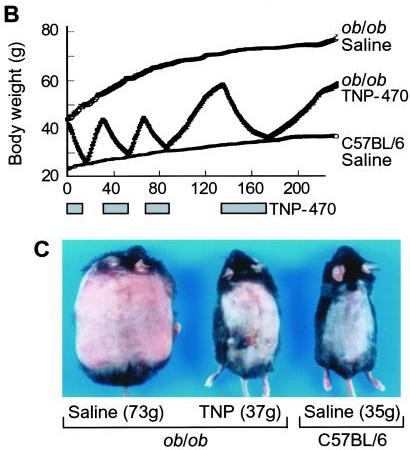



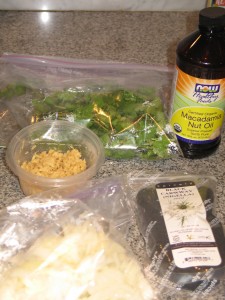
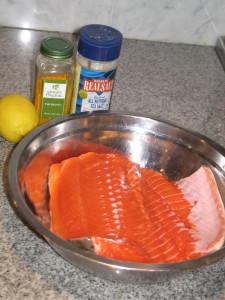
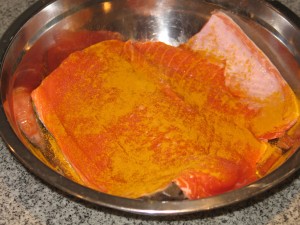
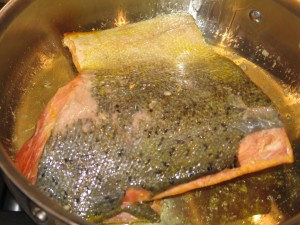
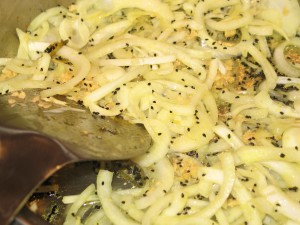

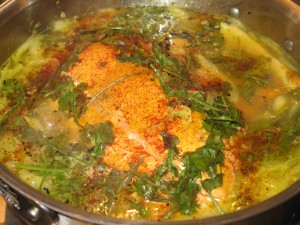
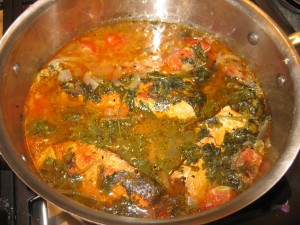
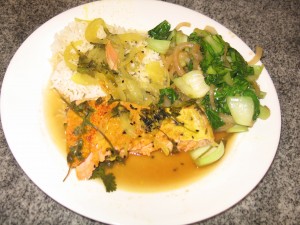




Recent Comments